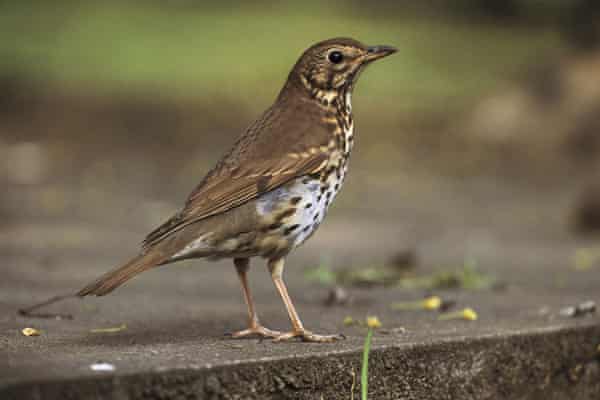The house sparrow remains the most frequently spotted garden bird, but 16 of the top 20 species have declined in number since last year, according to the RSPB’s Big Garden Birdwatch.
More than a million people took part in this year’s national bird survey on the last weekend in January – double the figure for the previous year.
Blue tits were the second most common bird, seen in three-quarters of all gardens, while starlings fell down the rankings from second to third place for the first time since 2010, with numbers of this once numerous bird down 83% since 1979.
Greenfinch and chaffinch continued to decline, recording their lowest averages since Big Garden Birdwatch began in 1979. Goldfinch and collared doves, which have both done well in recent years, declined compared with 2020, with only robins, blackbirds, carrion crows and the song thrush showing an increase on last year.
The popular survey first alerted the RSPB to the disappearance of the song thrush, which was a regular in the top 10 in the early years. By 2009, its numbers were less than half those recorded in 1979. This year, it was the 20th most seen bird, found in fewer than one in 10 gardens, its numbers down 78% since the first count.

Beccy Speight, chief executive of the RSPB, said she was “blown away” by the burgeoning popularity of the birdwatch, which showed that many people have become newly engaged with local wildlife during the coronavirus pandemic.
“Lockdowns have brought few benefits, but the last year has either started or reignited a love of nature for many people, right on their doorsteps,” she said. “We hope the birdwatch has kindled a new passion for wildlife for the thousands who took part for the first time this year – we need every voice raised to stand up for nature.
“The wildlife that gave us so much interest and solace is now just a fraction of what should be there. On the back of this wave of public support, we need the government to take the global leadership, policy and legislative opportunities open to it this year to reverse the decline and restore nature now.”
During spring term, more than 21,000 schoolchildren and their teachers also took part in the RSPB’s Big Schools Birdwatch. Woodpigeon was the most numerous species seen in school grounds, with an average of nine in each school; blackbird was second, with an average of eight per school.